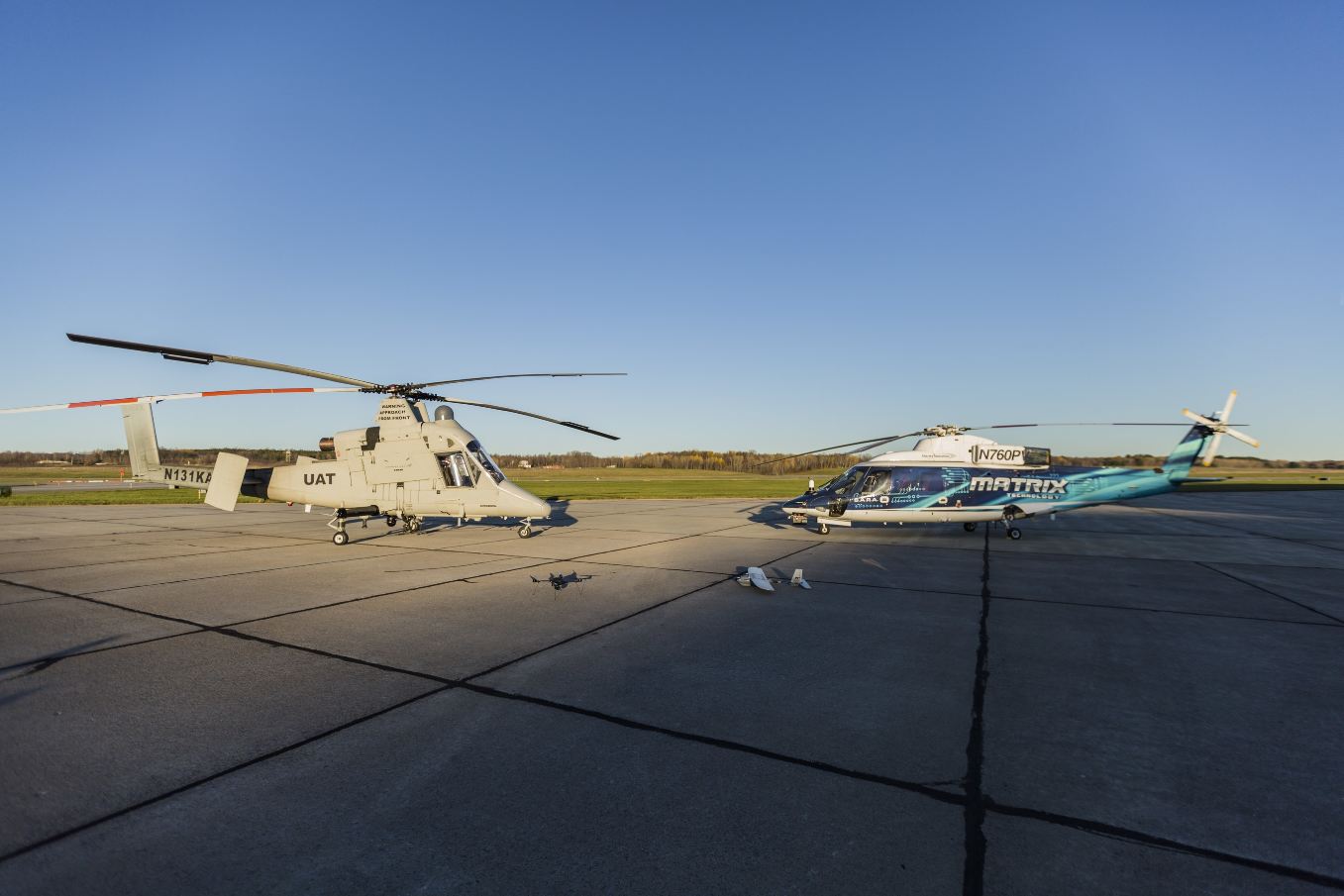Lockheed Martin has performed a demonstration to show how optionally-piloted helicopters and small unmanned aerial systems can work together to successfully locate and extinguish fires, pinpoint the location of a missing person, and bring that person to safety.
During the demonstration, the optionally piloted Kaman K-MAX and the Sikorsky Autonomy Research Aircraft (SARA) engaged in collaborative firefighting and search-and-rescue with the Indago quadrotor and Desert Hawk 3.1 fixed wing unmanned aircraft system (UAS) providing information, surveillance and reconnaissance.
Also during the demonstration, the Indago identified hot spots and relayed that information to an operator who directed the K-MAX to autonomously retrieve water from a nearby pond and drop it onto the fire.
The Desert Hawk identified the location of a missing person and SARA, a modified S-76 commercial helicopter featuring Sikorsky's Matrix system, conducted the search and directed the rescue. Lockheed Martin integrated the MATRIX technology with K-MAX so that SARA and K-MAX could communicate with each other during the demonstration. Using information provided by K-MAX, SARA autonomously scanned the area and found a safe place to land.
The New York UAS Test Site Operations Center at Griffiss International Airport also demonstrated progress toward UAS Traffic Management (UTM). The centre uses radars and sensors to enable the tracking of manned, unmanned and optionally-piloted aircraft systems.

